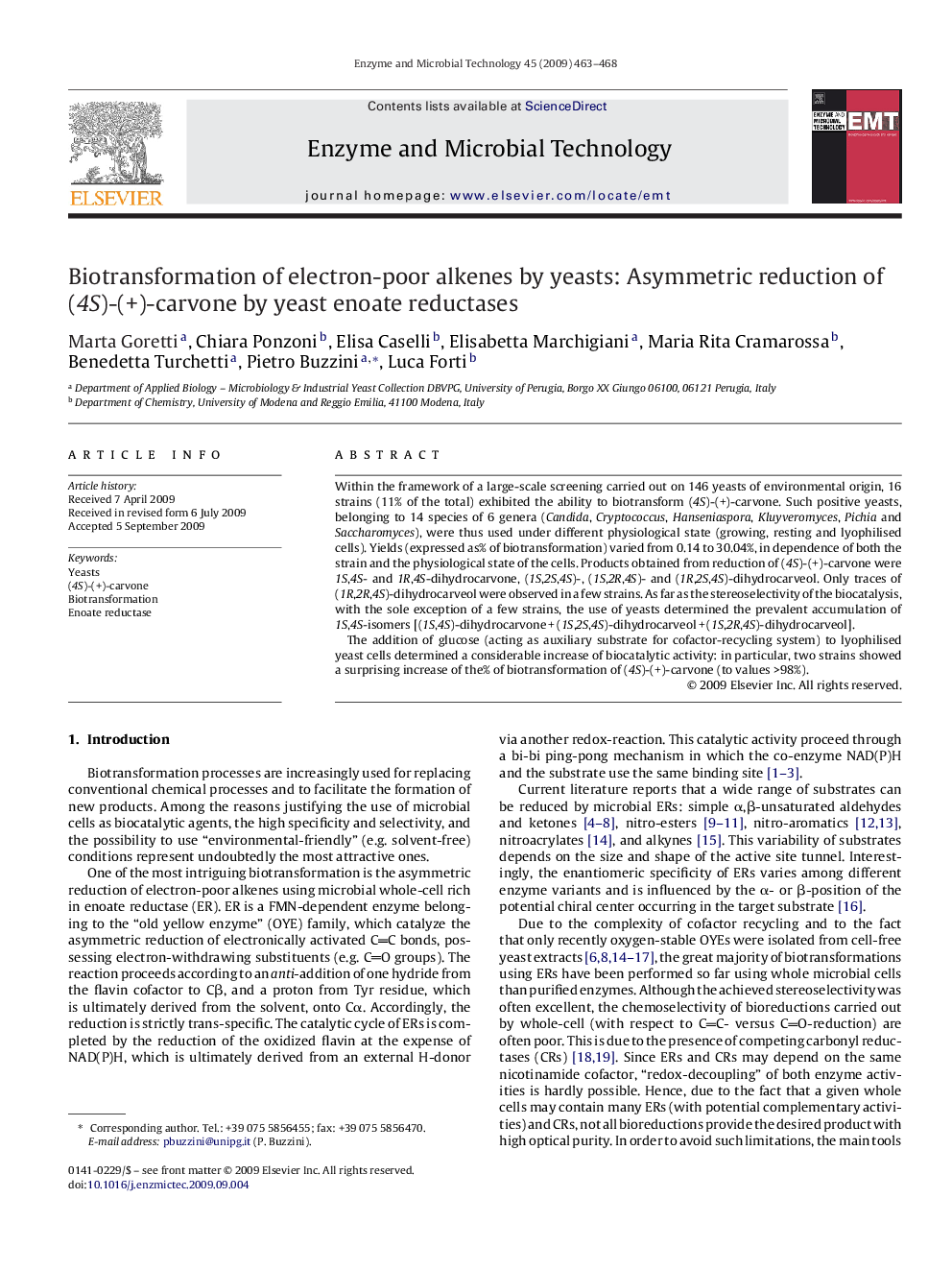| Article ID | Journal | Published Year | Pages | File Type |
|---|---|---|---|---|
| 17423 | Enzyme and Microbial Technology | 2009 | 6 Pages |
Within the framework of a large-scale screening carried out on 146 yeasts of environmental origin, 16 strains (11% of the total) exhibited the ability to biotransform (4S)-(+)-carvone. Such positive yeasts, belonging to 14 species of 6 genera (Candida, Cryptococcus, Hanseniaspora, Kluyveromyces, Pichia and Saccharomyces), were thus used under different physiological state (growing, resting and lyophilised cells). Yields (expressed as% of biotransformation) varied from 0.14 to 30.04%, in dependence of both the strain and the physiological state of the cells. Products obtained from reduction of (4S)-(+)-carvone were 1S,4S- and 1R,4S-dihydrocarvone, (1S,2S,4S)-, (1S,2R,4S)- and (1R,2S,4S)-dihydrocarveol. Only traces of (1R,2R,4S)-dihydrocarveol were observed in a few strains. As far as the stereoselectivity of the biocatalysis, with the sole exception of a few strains, the use of yeasts determined the prevalent accumulation of 1S,4S-isomers [(1S,4S)-dihydrocarvone + (1S,2S,4S)-dihydrocarveol + (1S,2R,4S)-dihydrocarveol].The addition of glucose (acting as auxiliary substrate for cofactor-recycling system) to lyophilised yeast cells determined a considerable increase of biocatalytic activity: in particular, two strains showed a surprising increase of the% of biotransformation of (4S)-(+)-carvone (to values >98%).
